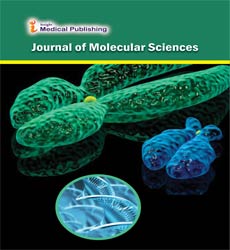Researchers Look for Mutations in a Gene
Sebastian Markett*
Department of Psychology, Humboldt-Universität zu Berlin, Berlin, Germany
*Corresponding Author:Sebastian Markett
Department of Psychology, Humboldt-Universität zu Berlin, Berlin, Germany
E-mail:sebastian.markett@hu-berlin.de
Received date:November 01, 2021; Accepted date: November 15, 2021; Published date: November 23, 2021
Citation:Sebastian (2021) Improvement of Dna Sequencing Strategies. J Mol Sci 5: e001.
Copyright: © 2021 Sebastian. This is an open-access article distributed under the terms of the Creative Commons Attribution License, whichpermits unrestricted use, distribution, and reproduction in any medium, provided the original author and source are credited
Introduction
Molecular genetics is a sub-discipline of biology thataddresses how differences inside the systems or expression ofDNA molecules manifests as variant among organisms.Molecular genetics frequently applies an "investigative method"to determine the structure and/or feature of genes in anorganism's genome using genetic screens. The sector of take alook at is based at the merging of numerous sub-fields inbiology: classical Mendelian inheritance, mobile biology,molecular biology, biochemistry, and biotechnology. Researcherslook for mutations in a gene or set offmutations in a gene to linka gene collection to a specific phenotype. Molecular genetics is apowerful technique for linking mutations to geneticconditionswhich can useful resource the look for treatments/treatmentoptions for diverse genetic diseases. For molecular genetics toincrease as a subject, several medical discoveries have beennecessary. The invention of DNA as a method to switch thegenetic code of life from one mobile to every other and amonggenerations turned into crucial for figuring out the moleculeaccountable for heredity. Watson and Crick (along with Franklinand Wilkins) figured out the structure of DNA, a cornerstone formolecular genetics. The isolation of a limit endonuclease in E.coli through Arber and Linn in 1969 opened the sector of geneticengineering. Limit enzymes had been used to linearize DNA forseparation via electrophoresis and Southern blotting allowed forthe identity of precise DNA segments through hybridizationprobes. In 1971, Berg applied restricts enzymes to create theprimary recombinant DNA molecule and primary recombinantDNA plasmid. In 1972, Cohen and Boyer created the primaryrecombinant DNA organism by way of inserting recombinantDNA plasmids into E. coli, now referred to as bacterialtransformation, and paved the manner for molecular cloning.The improvement of DNA sequencing strategies inside the pastdue Nineteen Seventies,first via Maxim and Gilbert, and then byusing Frederick Sanger, turned into pivotal to molecular geneticresearch and enabled scientists to begin undertaking geneticdisplays to narrate genotypic sequences to phenotypes.Polymerase chain reaction (PCR) the use of Taq polymerase,invented via Mullis in 1985, enabled scientists to createthousands and thousands of copies of a selected DNA collectionthat might be used for transformation or manipulated the usageof agarose gel separation. A decade later, the primary entiregenome became sequenced (Haemophilus influenza), followedby way of the eventual sequencing of the human genomethrough the Human Genome assignment in 2001.Theculmination of all of these discoveries was a new field known asgenomics that hyperlinks the molecular structure of a gene tothe protein or RNA encoded with the aid of that section of DNAand the functional expression of that protein within anorganism. These days, via the utility of molecular geneticstrategies, genomics is being studied in many version organismsand statistics is being amassed in computer databases like NCBIand Ensemble. The computer analysis and comparison of genesinside and among different species is referred to asbioinformatics, and hyperlinks geneticmutations on anevolutionary scale. The significant Dogma is the premise of allgenetics and performs a key role within the look at of moleculargenetics. The significant Dogma states that DNA replicates itself,DNA is transcribed into RNA, and RNA is translated intoproteins.at the side of the vital Dogma, the genetic code isutilized in understanding how RNA is translated into proteins.Replication of DNA and transcription from DNA to mRNA takesplace inside the mitochondria while translation from RNA toproteins occurs inside the ribosome. The genetic code is productof four base pairs: adenine, cytosine, uracil, and guanine and isredundant meaning a couple of mixtures of those base pairs(that are examined in triplicate) produce the same amino acid.Proteomics and genomics are fields in biology that pop out ofthe take a look at of molecular genetics and the critical Dogma.
Open Access Journals
- Aquaculture & Veterinary Science
- Chemistry & Chemical Sciences
- Clinical Sciences
- Engineering
- General Science
- Genetics & Molecular Biology
- Health Care & Nursing
- Immunology & Microbiology
- Materials Science
- Mathematics & Physics
- Medical Sciences
- Neurology & Psychiatry
- Oncology & Cancer Science
- Pharmaceutical Sciences
